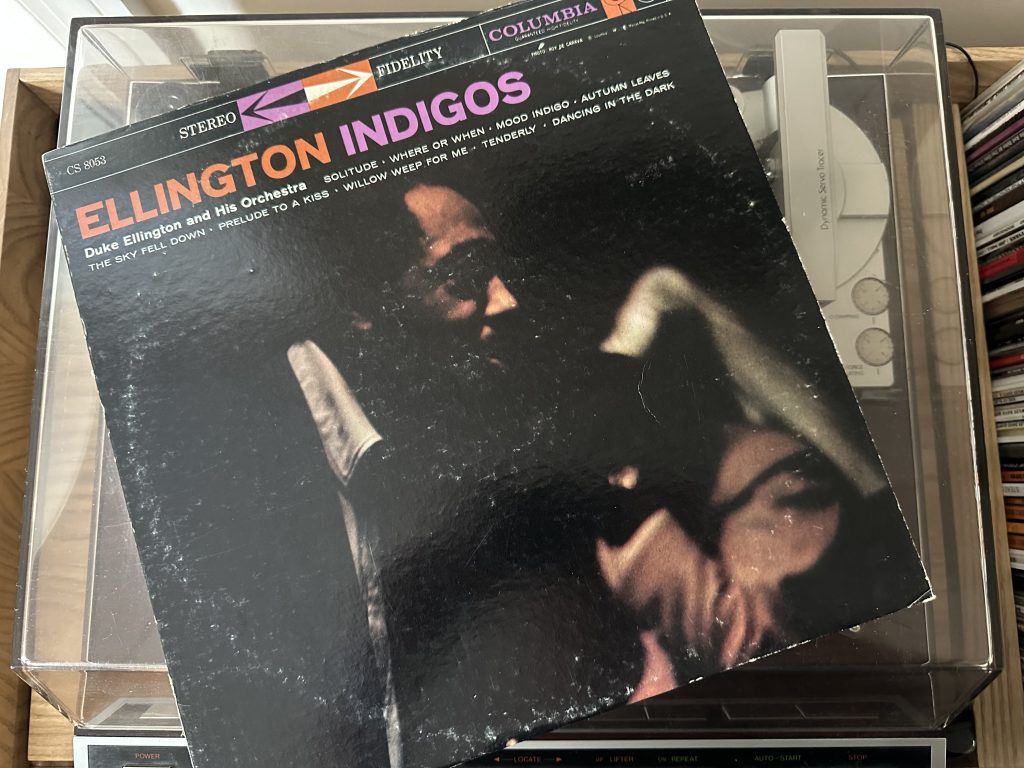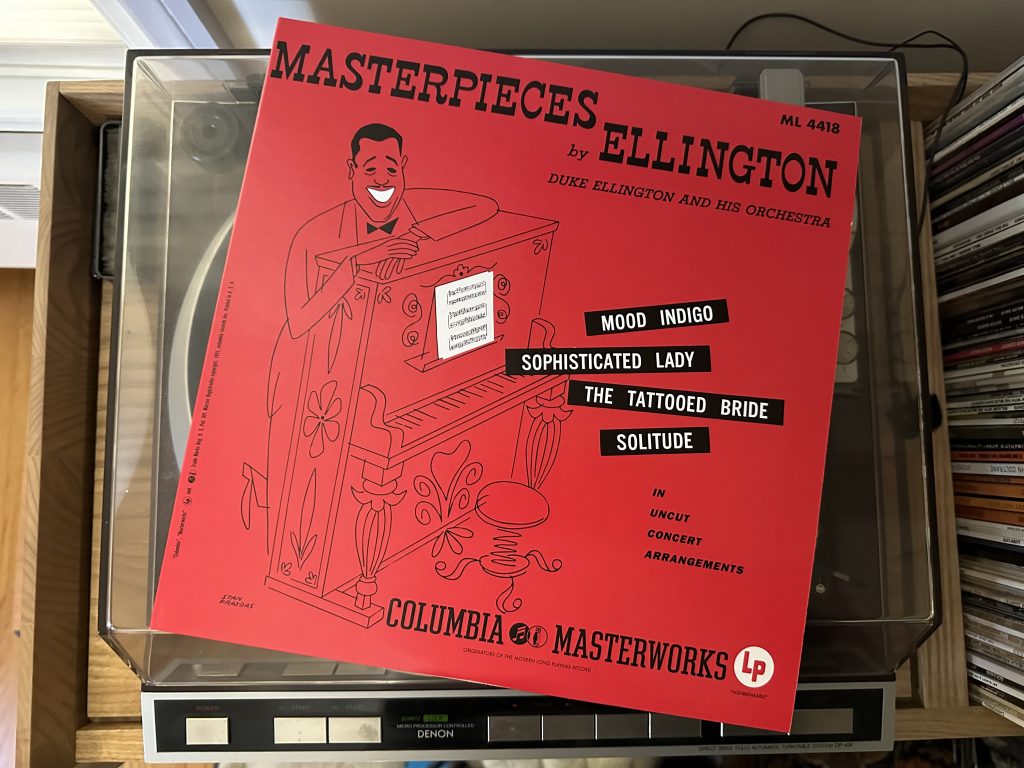
Album of the Week, November 12, 2022
I may have given the impression that, following Duke Ellington’s career resuscitation at the Newport Jazz Festival in 1956, he recorded nothing but works aimed at solidifying his artistic credentials. Certainly Black, Brown and Beige fits that description. But he—and Columbia Records—were not averse to recording more commercial music, either. Today’s record has eight* ballads, only three closely associated with Duke Ellington and his band, played in dance-friendly format. There are no sixteen minute suites here; exotic key changes are held to a minimum. For the most part this is just Ellington’s band playing it straight. And that’s the appeal of the record, because this band could play it straight and still zigzag your socks right off.
The opening is one of the great performances of Ellington’s signature “Solitude,” with the composer himself at the piano. He takes it freely for the first minute or so, until the arrival of Jimmy Woode on bass and Sam Woodyard on drums clicks things into tempo, followed by an entrance by the horns en masse. (It’s hard to resist the idea that they all came in from the subway at the same time, and snuck into the studio where Ellington was already hard at work.) The arrival of the trumpets about three minutes in is appropriately fanfare like, but the whole arrangement is remarkable. I’d really like to hear a version of this that’s just Ellington’s piano; he does some astonishing things behind the band, and brings the tune back into focus in a solo conclusion. It’s a four minute long symphony.
Richard Rodgers’ “Where or When” features a breathy Paul Gonsalves on tenor sax, with interjections from the other horns providing punctuation throughout. This tune has always struck me as feeling like a single sentence, and here the sentence builds to a joyous rhapsody for solo saxophone. It’s a quiet showstopper.
“Mood Indigo” begins with a statement of purpose from Ellington on the piano, but quickly yields the floor to Shorty Baker’s trumpet. Following his verse, the entire band takes up the chorus, spotlighting the amazing unity and singleness of purpose of this ensemble. Baker’s trumpet returns over the horns, who pause to let him speak before everyone comes back together.
“Autumn Leaves” is one of the tunes that is considerably different depending on which version of the record you hear. My CD copy* had a lengthy rendition with verses sung in both French and English by Ozzie Bailey, while the LP omits the French verse entirely. Both versions feature a poignant violin solo by Ray Nance both opening and closing the track. The longest performance on the album, it carries a deep melancholy.
“Prelude to a Kiss” has some of the same energy of the A-side’s opening “Solitude,” with the horns hinting at some of the energy of that number, but ultimately proves to be a more intimate number, with Johnny Hodges’ alto romancing the listener all the way through.
The next number on the vinyl release, “Willow Weep for Me,” brings back Shorty Baker on trumpet, but effectively functions as a solo for the entire band, with the saxophones providing an introduction that slides down the scale into the key. The pianist states the theme, followed by Baker’s forthright trumpet response, and they continue to trade bars of the melody throughout, with the rest of the horns serving as a Greek chorus commenting on the solos.
“Tenderly” is conceived as a duet for Ellington and Jimmy Hamilton on clarinet, and the first two chorus is taken out of time. The following calls the dancers to the floor, with Woode and Woodyard underpinning their steps. Finally, when the band comes in, Hamilton takes flight, his obligato entwining the final chorus, which ends on a moment of seeming finality—until Hamilton and Ellington return to tag the final eight bars again in free time, as a sort of final signature.
The last track on the stereo vinyl release, Arthur Schwartz’s “Dancing in the Dark,” is nominally a solo for Harry Carney on baritone saxophone, but also features some fine trumpet playing in the second verse, and closes out the album as a swooning dance number. The album itself repays listening closely to see how Ellington put his orchestra together, as well as how he and Strayhorn got the maximum emotional impact from each tune. Highly recommended for late night listening.
You can listen to the album here:
*I first came across this recording a year or so after graduating from UVA, in the 1987 CD reissue, which has ten tracks and a different running order. And apparently the mono release has different performances than the stereo release. So the point is, if you see a copy in a different format, it’s worth picking it up and listening to see what’s different.

